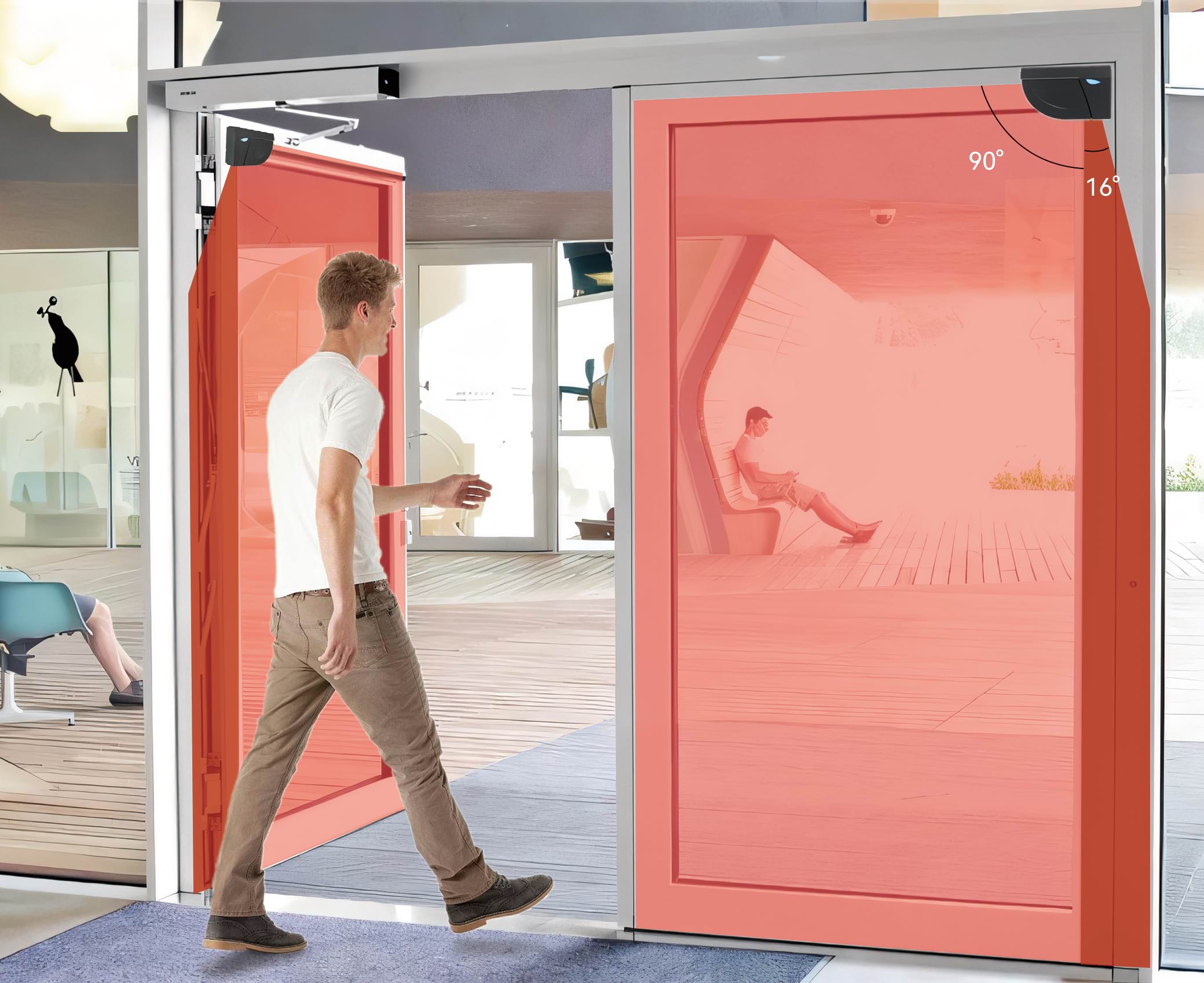How Does a Laser Sensor React to Small Pets or Objects Near a Swing Door?
Hospitals and laboratories are environments where precision, safety, and hygiene are paramount. Swing doors in these settings must function seamlessly to maintain accessibility, minimize contamination risks, and ensure the safety of personnel and equipment. Laser sensors are increasingly being used to automate and enhance the operation of swing doors in such critical spaces. But are laser sensors suitable for these applications? Let’s explore their functionality and benefits in hospital and lab environments.

How Do Laser Sensors Work on Swing Doors?
Laser sensors operate by emitting laser beams to monitor a designated area for movement or presence. When the sensor detects an object or person in its field, it triggers the swing door to open or stop to avoid collision. The precision and reliability of laser technology make it particularly advantageous in controlled environments like hospitals and labs.
Advantages of Using Laser Sensors in Hospitals and Labs
- High Precision and Reliability
- Laser sensors offer pinpoint accuracy, detecting even small movements within their range. This ensures that doors respond quickly to the presence of people or equipment, reducing delays and enhancing workflow.
- They also prevent unnecessary activations caused by environmental factors such as airflow or lighting changes, which is crucial in sensitive settings.
- Enhanced Safety
- In hospitals and labs, the movement of patients, staff, and delicate equipment demands heightened safety measures.
- Laser sensors can differentiate between stationary and moving objects, ensuring the door doesn't close on people, wheelchairs, or carts.
- They comply with safety standards such as ANSI/BHMA for automatic door systems, making them ideal for healthcare applications.
- Hygienic Operation
- Touchless activation through laser sensors minimizes the need for physical contact, reducing the risk of cross-contamination.
- This is especially important in areas like operating rooms, cleanrooms, or isolation wards, where strict hygiene is critical.
- Adaptability to High Traffic
- Hospitals and labs often experience high foot traffic, including the movement of stretchers, trolleys, and large groups of people. Laser sensors can handle these demands by providing consistent and responsive door operation.
- Environmental Versatility
- Laser sensors perform well in varying environmental conditions, including areas with temperature fluctuations, moisture, or bright lighting, which are common in healthcare and lab facilities.
Use Cases for Laser Sensors in Hospitals and Labs
- Operating Rooms and Cleanrooms
- Laser sensors ensure touchless and precise door operation, maintaining sterile environments.
- Their ability to define specific detection zones prevents false activations from nearby activity.
- Emergency Rooms (ERs)
- In high-pressure ER settings, laser sensors provide quick and reliable door automation, allowing medical teams to move swiftly with stretchers or wheelchairs.
- Laboratories
- Labs often house sensitive equipment and experiments that require controlled access.
- Laser sensors can be programmed to restrict door operation to authorized personnel, enhancing security.
- Pharmaceutical Facilities
- These facilities benefit from the contamination-free operation of laser-activated doors, ensuring compliance with Good Manufacturing Practices (GMP).
- Radiology and Imaging Rooms
- Doors to these rooms must operate silently and without vibration to avoid disturbing sensitive equipment. Laser sensors enable smooth and precise door movements.
Considerations for Implementing Laser Sensors in Hospitals and Labs
- Installation and Calibration
- Proper installation and calibration are essential to ensure the sensor's detection field is optimized for the specific application.
- Detection zones should be customized to account for the movement of people and equipment at varying heights.
- Maintenance
- Regular cleaning and maintenance of laser sensor components are critical in sterile environments to prevent dust or debris from interfering with sensor performance.
- Compliance with Regulations
- Laser sensors used in healthcare must meet safety and performance standards, such as ADA (Americans with Disabilities Act) and local building codes.
- Integration with Existing Systems
- Laser sensors should integrate seamlessly with other automation systems, such as HVAC controls or access management systems, for optimal efficiency.
Challenges and Limitations
- Cost: Laser sensors are often more expensive than traditional infrared or microwave sensors. However, their long-term reliability and precision justify the investment in critical settings.
- Complexity: Advanced sensors may require specialized training for installation and troubleshooting.
Final Thoughts
Laser sensors are an excellent choice for hospitals and laboratories with swing doors due to their precision, safety, and hygienic operation. They address the unique needs of these environments, from ensuring seamless access to minimizing contamination risks. By investing in laser sensor technology, healthcare and lab facilities can enhance both operational efficiency and safety, contributing to better outcomes for staff, patients, and research activities.







